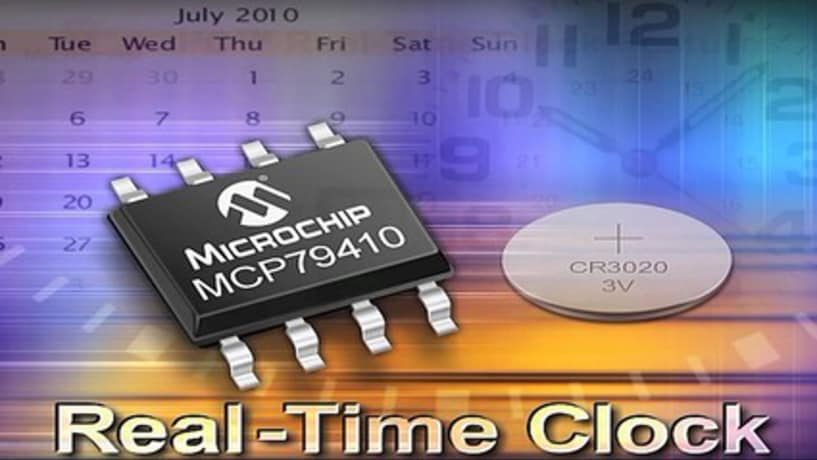Feature-Rich, Low-Cost Timekeeping Solutions
A Real-Time Clock/Calendar (RTCC) maintains accurate time within embedded systems even when the main power is off. This provides an advantage over RTCCs embedded in microcontrollers (MCUs) by reducing power consumption by not repeatedly waking the MCU unnecessarily. Our I2C and Serial Peripheral Interface (SPI) real-time clocks range from simple, low-cost devices to highly integrated mid-range devices containing additional user available memory (SEEPROM & SRAM) included and a combination of features that are useful when operating within a single battery-backed clock device. These cost-effective solutions offer more features and better performance than many competitive devices and will meet the specific requirements of your application.
Why Choose Our RTCCs?
Innovative Peripherals
- Battery switchover with power-fail timestamp
- Wide digital trimming range
- Watchdog timer with dual retriggers
- Event detect inputs with a programmable debounce
- Unique ID with a user unlock sequence
Easy to Implement
- I2C and SPI interfaces
- Industry-standard pinouts
- I2C: 8 pins
- SPI: 10 or 14 pins
- RTCC-specific daughter boards that work with our standard development platforms
Three Memory Options
- Battery-backed SRAM
- Nonvolatile EEPROM
- Protected EEPROM area
- Preprogrammed with unique EUI-48™ or EUI-64™ MAC address
Find The Right RTCC for Your Design
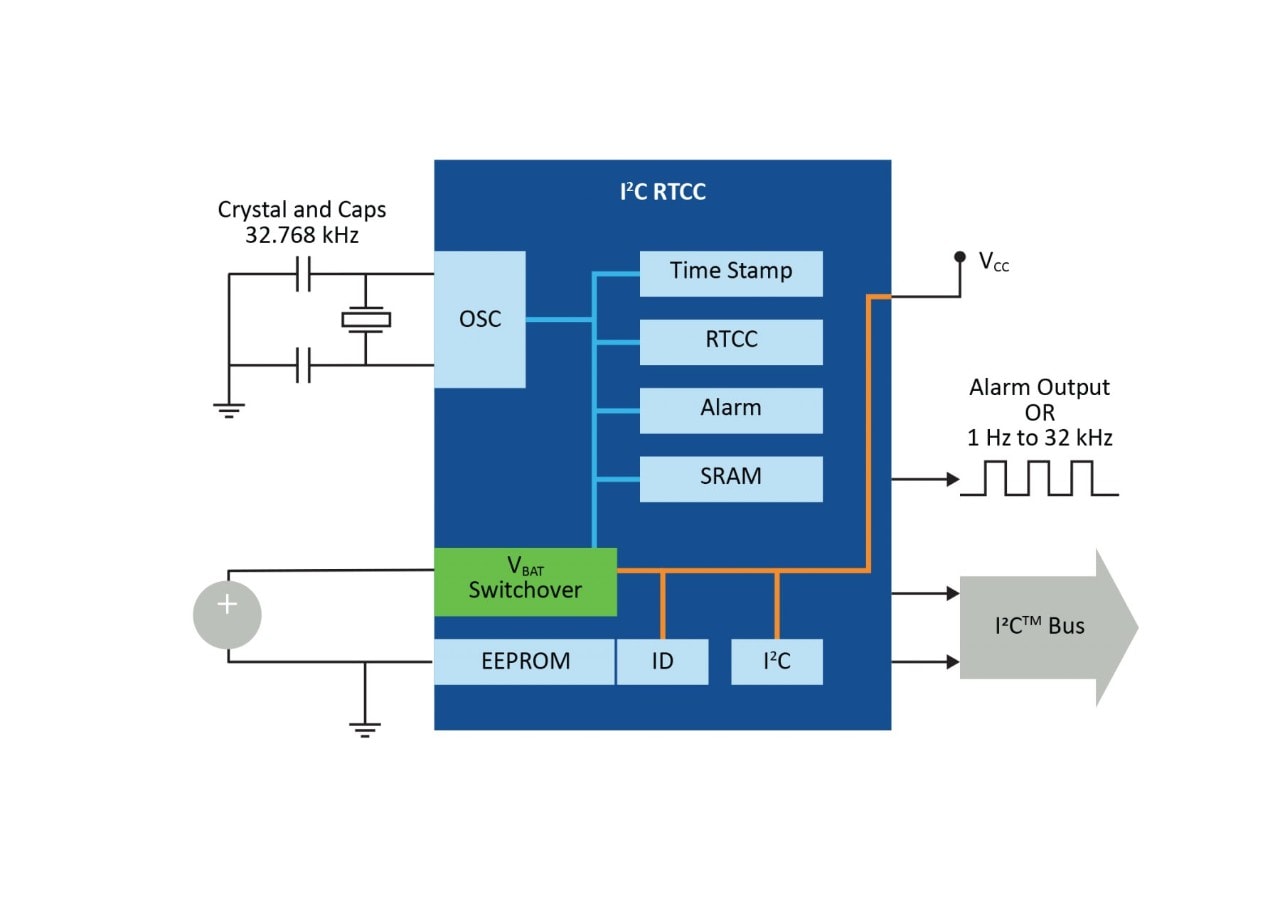
Timing Features
- Hours, minutes, seconds
- Day of the week, day, month and year
- Dual alarms: Single IRQ Out using VCC or VBAT
- Programmable clock: 1 Hz to 32 kHz using VCC
- Digital trimming from −127 ppm* to +127 ppm
- Up to 11 seconds/day
- Timestamp at battery switchover
- VCC to VBAT
- VBAT to VCC
*NOTE: 1 ppm ≈ 86 milliseconds/day
Memory Options
- 64 bytes SRAM
- 1 Kbits SEEPROM
- 64 bits Unique ID
- 0 = Blank
- 1 = EUI-48 MAC address
- 2 = EUI-64 MAC address
Voltage and Current
- Main power (oscillator running)
- VCC = 1.8V to 5.5V
- ICC = < 5 μA
- Battery backup (timekeeping and RAM)
- VBAT = 1.3V to 5.5V
- IBAT = < 700 nA
- Battery backup (timekeeping and RAM)
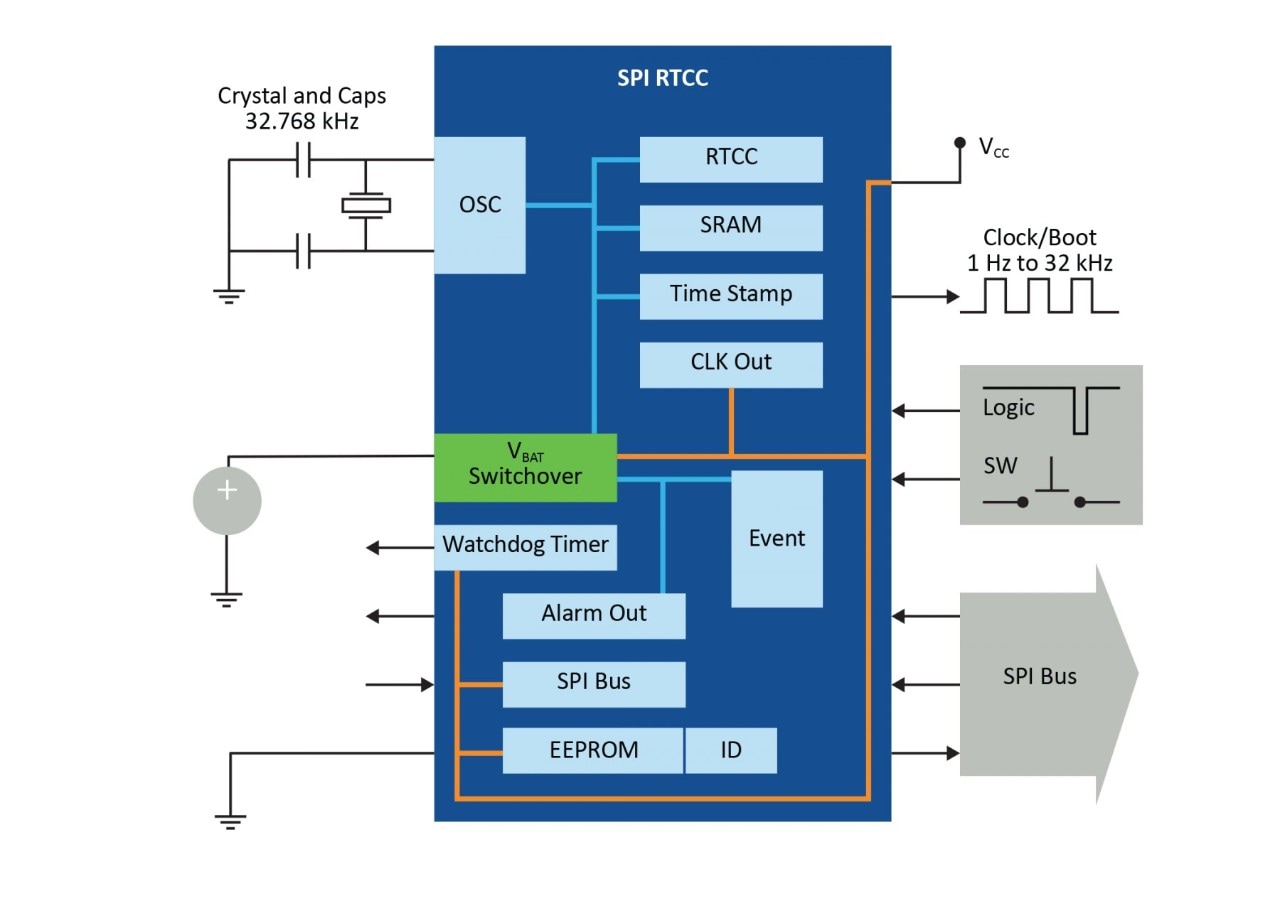
Timing Features
- Hours, minutes, seconds
- Alarm down to 0.01 seconds
- Day of the week, day, month and year
- Dual alarms: Single IRQ Out using VCC or VBAT
- Programmable clock out: 1 Hz to 32 kHz using VCC
- 32 kHz boot clock at power up (MCP795BXX)
- Digital trimming from −255 ppm* to +255 ppm
- Up to 22 seconds/day
- Timestamp at battery switchover
- VCC to VBAT
- VBAT to VCC
- Watchdog timer
- SPI retrigger
- I/O retrigger
*NOTE: 1 ppm ≈ 86 milliseconds/day
Memory Options
- 64 bytes SRAM
- 2 Kbits or 1 Kbits EEPROM
- 128 bits Unique ID
- 0 = Blank
- 1 = EUI-48 MAC address
- 2 = EUI-64 MAC address
Voltage and Current
- Main power (oscillator running)
- VCC = 1.8V to 5.5V
- ICC = < 1 μA
- Battery backup (timekeeping and RAM)
- VBAT = 1.3V to 5.5V
- IBAT = < 700 nA
Use our Real-Time Clock PICtail™ daughter boards, along with a PICtail Plus Expansion Board and an Explorer 16/32 Development Board, to evaluate real-time clock functionality in microcontroller-based embedded applications.
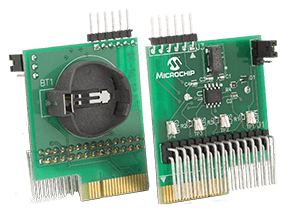
MCP7941X PICtail Plus Daughter Board (I2C)
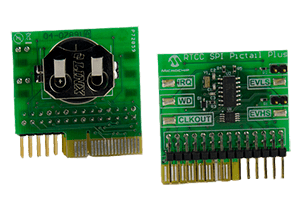
MCP795XX PICtail Plus Daughter Board (SPI)
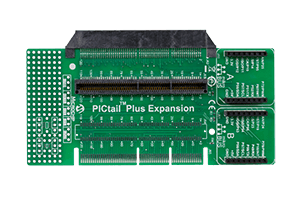
PICtail Plus Expansion Board
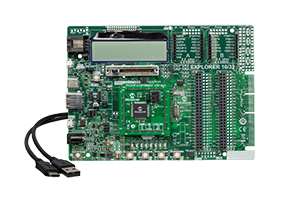
Explorer 16/32 Development Board
How Can You Use an RTCC in Your Application?
While there are many ways that RTCC technology can be used to enhance an embedded design, here are a few examples of how an RTCC can be used:
- Enable wired and wireless communications between devices in smart energy applications using an RTCC with a MAC address
- Use digital trimming in the RTCC to perform software temperature compensation for more accurate timekeeping in utility metering applications
- Provide any Ethernet application with its own unique identification using the RTCC’s EUI-48 or EUI-64 MAC address
- Display the time of day and date on the LCD in any embedded system
Additional Clock and Timing Technologies
Whatever your complex timing requirements are, we offer a comprehensive portfolio of technologies, services, and solutions to help you build more reliable systems. Visit our Clock and Timing page to learn more about our atomic clocks, buffers, crystals, oscillators and other timing products.
- Application Notes
- Brochures
- FAQs
|
Title
|
|
|---|---|
| Enabling Intelligent Automation Using the MCP7941X I2C RTCC | Download |
| AN1364 - Using the Alarm Feature on the MCP79410 RTCC to Implement a Delayed Alarm | Download |
| AN1413 - Temperature Compensation of a Tuning Fork Crystal Based on MCP79410 | Download |
| AN1414 - Using HI-TECH C Compiler to Interface RTCC Devices to 8-Bit PIC MCUs | Download |
| AN1365 - Recommended Usage of Microchip Serial RTCC Devices | Download |
| AN1355 - A Complete Electronic Watch Based on MCP79410 I2C? RTCC | Download |
|
Title
|
|
|---|---|
| I2C & SPI Real-Time Clock/Calendar Sell Sheet | Download |
What Is an RTCC?
How Does an RTCC Work?
An RTCC uses 32.768 kHz oscillations to provide a clock to the internal counters as shown in the figure on the right. A 15-bit counter overflows every 32,768 clocks (which is every second), providing a consistent time base. The counter feeds additional counters, which count the seconds, tens of seconds, minutes and so on, up to tens of years. If available, alarms compare the current values of the time counters to the alarm registers. If there is a match, the RTCC will modify a flag bit in an internal register or change the state of an output pin.
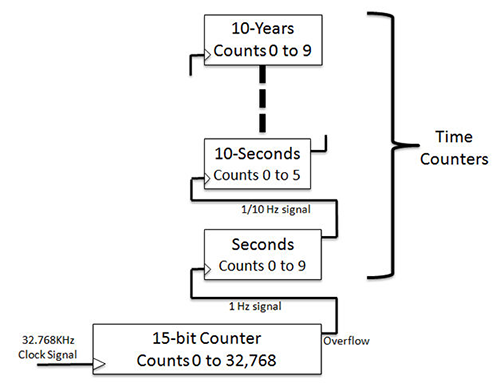
How Does the RTCC Begin Oscillation?
As noted above, an RTCC works with an oscillator, which is typically a quartz crystal that is shaped to vibrate at a specific frequency. Most RTCC devices use a 32.768 kHz quartz crystal, which is often referred to as a watch crystal. They also typically use an internal inverting amplifier circuit, as shown in the figure on the right, to resonate the crystal. The amplifier is configured with two feedback paths between its output and input that cause it to resonate or oscillate.
The oscillator circuit is not resonating before the RTCC's amplifier is enabled. When the amplifier is enabled, any thermal or background noise picked up by the oscillator circuit is amplified and causes the system to begin to oscillate. The oscillations quickly grow in amplitude.
The internal resistor (Rf) provides a non-frequency-specific feedback path around the amplifier. This assists in starting oscillations, but it has relatively high impedance. The crystal has much lower impedance at the rated frequency and rapidly dominates over the internal resistor to set the frequency of the oscillations. Capacitors (C1 and C2) ensure stable oscillation. Their values are determined by the crystal used and any other capacitance in the oscillator circuit.
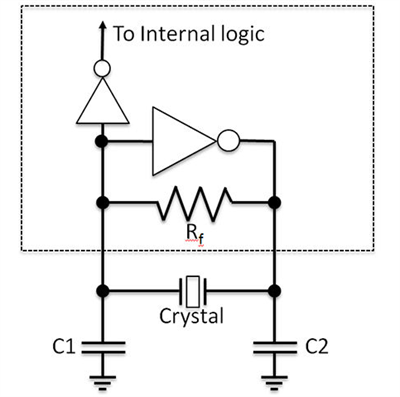
How Does Temperature Affect Timekeeping?
Crystals only resonate at their rated frequency at a specified temperature. This is typically 25°C for 32.768 kHz tuning-fork watch crystals. The crystal will resonate at lower frequencies at other temperatures. This is a highly predictable property of the thermal expansion of quartz. While minor changes in temperature may not be an issue, as temperatures move further away from 25°C, the variance in frequency may cause the RTCC to lose significant amounts of time. Therefore, many RTCC devices offer a digital trimming or analog compensation scheme that can adjust for the frequency error to ensure accurate timekeeping.
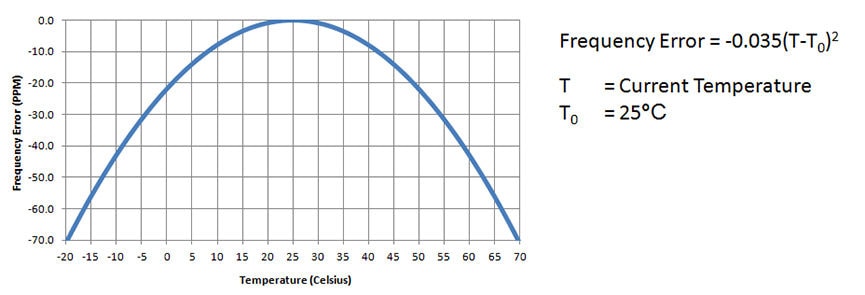
When Would You Use an RTCC?
What is Battery Backup?
What is BCD?
8-bit USB PIC Microcontrollers with Active Clock Tuning
Microchip Technology expands its Full-Speed USB 2.0 Device PIC® microcontroller portfolio with three new Enhanced Midrange 8-bit families comprising 15 scalable MCUs ranging from 14 to 100 pins with up to 128 KB of Flash. All feature internal clock sources with the 0.25% clock accuracy necessary for USB communication, which saves up to $0.15 by eliminating the need for an external crystal. Additionally, all three families are eXtreme Low Power compliant, with power consumption down to 35 µA/MHz Active and 20 nA in Sleep mode.
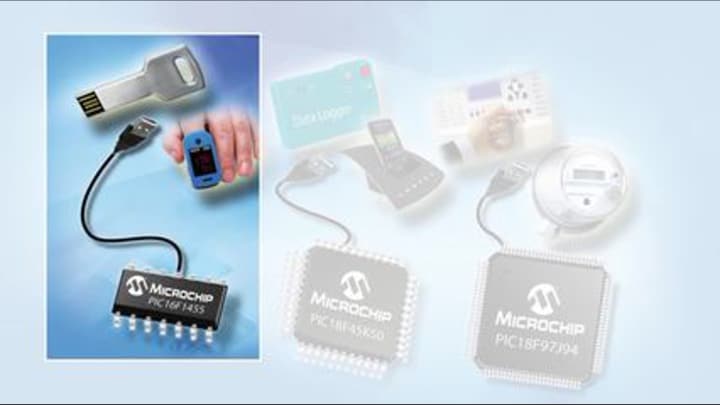
8-bit USB PIC Microcontrollers with Active Clock Tuning
Microchip Technology expands its Full-Speed USB 2.0 Device PIC® microcontroller portfolio with three new Enhanced Midrange 8-bit families comprising 15 scalable MCUs ranging from 14 to 100 pins with up to 128 KB of Flash. All feature internal clock sources with the 0.25% clock accuracy necessary for USB communication, which saves up to $0.15 by eliminating the need for an external crystal. Additionally, all three families are eXtreme Low Power compliant, with power consumption down to 35 µA/MHz Active and 20 nA in Sleep mode.

Real Time Calendar Clock with Memory & Battery Switcher
Demonstration of the Advanced features of the Microchip RTCC chips including Power Cycle logging, EUI storage and EEPROM data storage.
